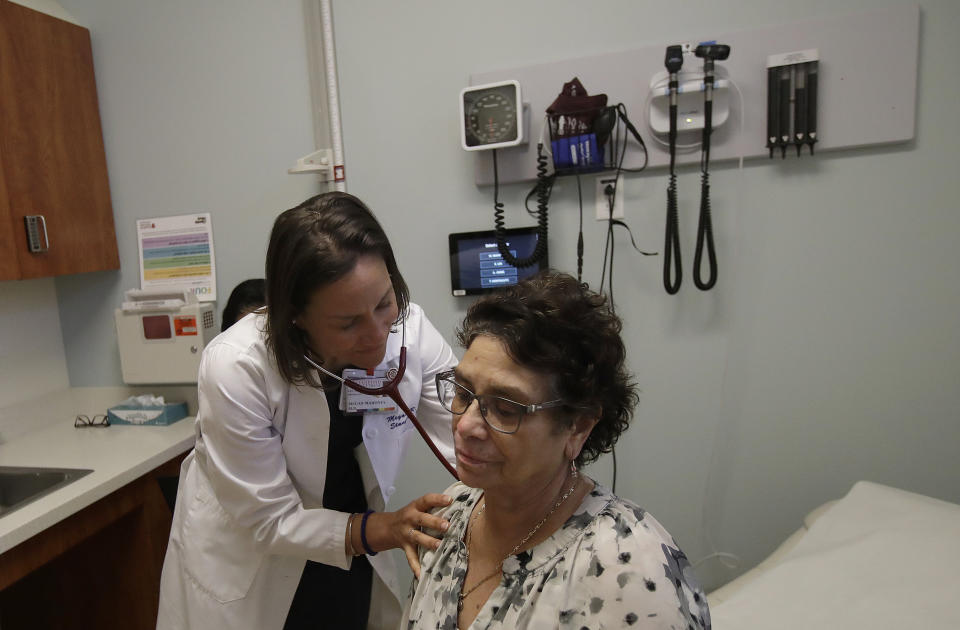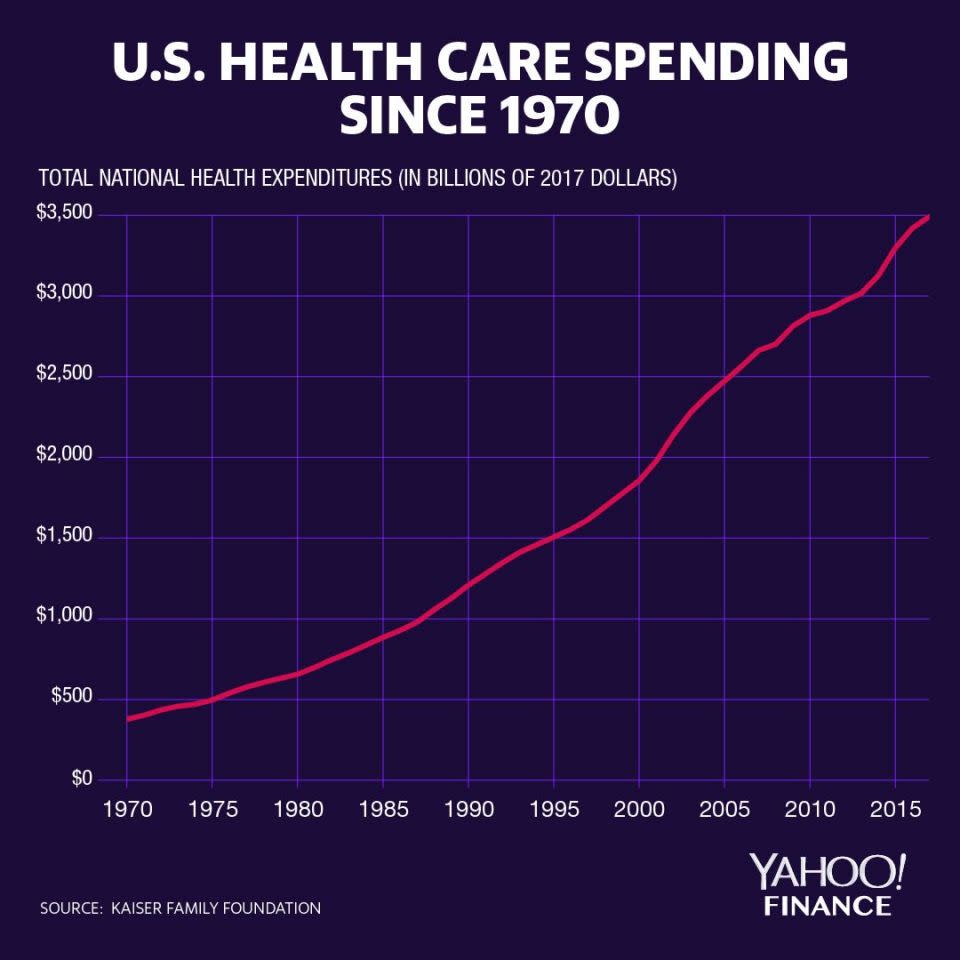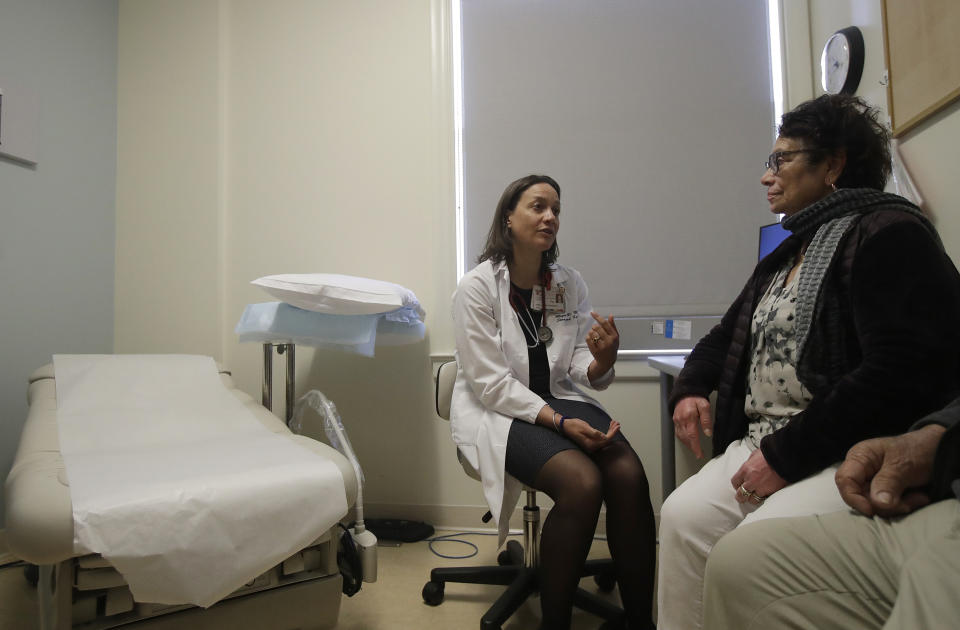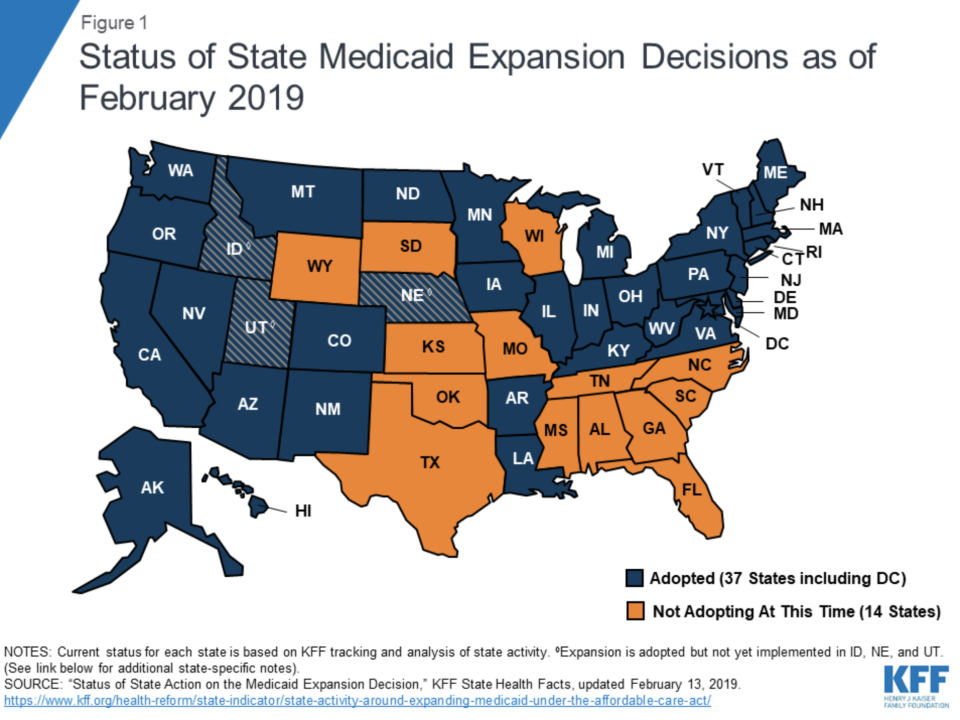'Everyone’s health insurance is more expensive' as more Americans manage chronic diseases
The cost of health care continues to be a major issue in the U.S., and chronic diseases have become an increasing burden.
The CDC defines chronic illnesses as “conditions that last 1 year or more and require ongoing medical attention or limit activities of daily living or both.” Major chronic illnesses include heart disease, arthritis, obesity, cancer, mood disorders, diabetes, Alzheimer’s (and other dementias), Crohn’s disease, and stroke.
The treatment of chronic illnesses “is a cost to the health system,” David Hoffman, an associate professor of ethics and health policy at Maria College, told Yahoo Finance. “And as a result, everyone’s health insurance is more expensive. It’s more expensive to operate health care institutions because of the demand.”
A 2017 RAND study found that 6 in 10 of the roughly 252 million adults in the U.S. have a chronic illness and 4 in 10 have two or more. The Partnership to Fight Chronic Disease estimates that more than 30 million Americans suffer from three or more chronic illnesses.
RAND noted that chronic conditions “increase with age — as an entire generation of baby boomers is about to find out.”

‘The key reason why Medicare spending is increasing’
U.S. health care spending grew 3.9% in 2017, reaching $3.5 trillion or $10,739 per person, according to the Centers for Medicaid and Medicare Services (CMS). That accounts for about 17.9% of the nation’s GDP.
And the CDC estimates that about 90% of the nation’s annual health care expenditures “are for people with chronic and mental health conditions.”
Furthermore, “Medicare is taxpayer-funded,” Ken Thorpe, professor of health policy at Emory University, told Yahoo Finance. “And in the Medicare program, the biggest source of growth of Medicare spending is the explosion of patients that have chronic disease. ... That’s the key reason why Medicare spending is increasing.”

‘80% of my finances go to health care’
Doreen (who asked that her last name not be used) was first diagnosed with gestational diabetes when she was pregnant with her daughter. Then, years later, the New Jersey native was diagnosed with Type 2 diabetes. After getting divorced, she had to start move to “really expensive” COBRA insurance.
“My COBRA costs me $560 a month to keep that health insurance,” she said. “I have a $2,000 deductible before they will cover anything.”
Doreen takes Invokana and Tradjenta to treat her diabetes. The Invokana costs her over $200 a month.
“What happens is they keep changing it periodically every year,” Doreen said. “They’re like ‘Oh we don’t cover this one anymore.’”
She went off Invokana to another drug, but her insurance stopped covering it so she ended up back on Invokana. “It’s like every year, they keep switching my drugs and what they’ll cover, and it affects my blood sugar,” Doreen said.

And although she receives alimony and works two jobs, covering her COBRA payments doesn’t come easily.
“I would say that 80% of my finances go to health care,” Doreen said. “From January to July, my medical costs are all for my diabetes, nothing else.” After July, once she hits her deductible, she takes care of things that she was putting off earlier in the year, such as a mammogram and covering her medications.
Including her deductible, she estimates that she spends between $2,500 to $3,000 each year on out-of-pocket costs.
“When you add all that up, it’s a lot,” Doreen said.
Doreen’s doctor advised her not to go on the Affordable Care Act of 2010 — also known as Obamacare — and take COBRA instead “because he was concerned with what’s going on with the government and with health care.”
‘The ACA did begin to shift the curve’

Dr. Georges Benjamin, the executive director of the American Public Health Association, said that the U.S.’s current health care system “does and doesn’t” do enough for people with chronic diseases.
“We don’t have a system with everybody in, so people who aren’t in the system, their diseases get delayed, and so they’re more costly,” Benjamin told Yahoo Finance. “And then there are certainly diseases much more costly than others.”
The key with chronic diseases generally is prevention, an aspect of the health care system that Obamacare attempted to address.
“We’re working very hard to try to get a health system which focuses a lot more on the front end of health care, trying to address things early,” he said. “Prevention is important to try to reduce those costs. And so the ACA did begin to shift the curve of our care more upstream. We’re trying to adjust these disease processes early, so to that extent, the ACA has begun to bend that cost curve.”

Benjamin noted that not every state has expanded Medicaid for residents, a key provision in the ACA aimed at covering more low-income Americans.
“Those states that haven’t are not getting the benefit of what the ACA and expanded health care coverage can offer,” he said. “The other thing is that the ACA was encouraging a lot more disease management through models of the Center for Medicare and Medicaid Services.”
‘Prevention is important to try to reduce those costs’
Sometimes, having insurance is not enough.
Alexander McClendon, who suffers from chronic kidney disease, has been in renal failure since 2012. Since then, he estimates that he has spent over $30,000 on medical costs.
Although he has insurance, he has not been able to work in over six years as he waits for a kidney transplant.
“I had to get myself acclimated to taking the treatments, and it was hard to do with trying to go to work because it took so much out of me,” McClendon said.
Hoffman noted that people with chronic diseases tend to have more absenteeism from work. “This is an issue for employers that they don’t even recognize,” he said.

Benjamin reiterated that the best way to drive down these costs to prevent chronic diseases to begin with.
“Any disease that is expensive becomes a cost to everyone,” he said. “And that means if you properly tackle it, everybody reaps the savings.”
And many chronic diseases — such as Type 2 diabetes, obesity, and high blood pressure — are preventable through lifestyle changes.
“If we were more active, ate a healthier diet, took better care of ourselves, and didn’t smoke, we could dramatically reduce chronic disease costs — both to individuals and families, and the health care system,” Benjamin said. “That’s not necessarily a ding on the health care system but a reflection of the lifestyle that we live.”
Adriana is an associate editor for Yahoo Finance. Follow her on Twitter @adrianambells.
READ MORE:
'It is immoral:' Why Kamala Harris went after Joe Biden on health care
'The system is broken': These doctors practice a less pricey form of health care
What is direct primary care? An alternative form of health care avoids insurance altogether
Read the latest financial and business news from Yahoo Finance
Follow Yahoo Finance on Twitter, Facebook, Instagram, Flipboard, SmartNews, LinkedIn, YouTube, and reddit.

